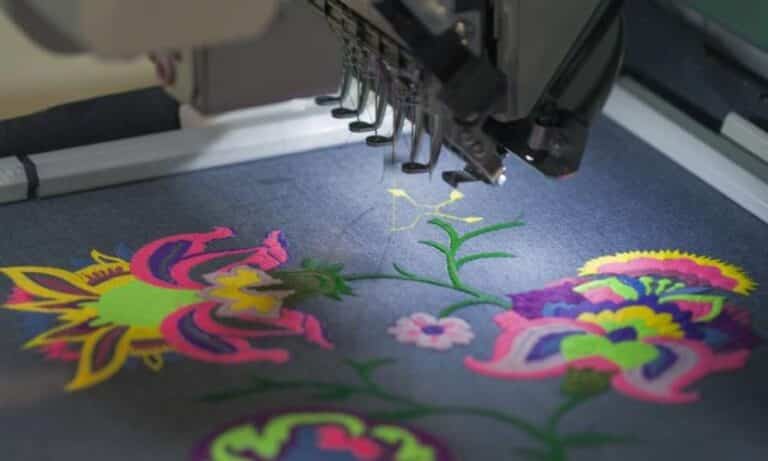Unlock Top Seamstresses Secrets Now!
Looking for the top seamstresses secrets for how they create those magnificent costumes? In the vibrant world of fashion, where every stitch echoes a story, lie hidden pockets of wisdom known only to a select few.
These are the guardians of time-honored traditions, the covert couturiers – seamstresses who hold secret techniques passed down through generations. In this article, I’ll pull back the curtain on these clandestine arts, revealing exclusive tips and tricks that have long been the preserve of these skilled craftswomen.
Journey with me as I unravel the threads of mystery and take you into the heart of this fascinating universe.
Table of Contents
Key Takeaways
- Various fabrics and embellishments can be used to create unique and memorable fashion designs.
- Fabric duplicated with interfacing, plastic beads, metallic bobbins, and stretch fabric with a 5 cm width, folded in half, are all popular options for designers.
- Understanding the properties and best practices for working with these fabrics and embellishments can help designers create successful and stunning pieces.

Fabric Types
Stretch Fabric with 5 cm Width
Stretch fabrics are versatile and comfortable to wear. They can be used in a variety of garments and are perfect for sportswear, activewear, and casual wear.
The stretch fabric with 5 cm width is a popular choice for designers because of its elasticity and flexibility. It is often used in the waistbands of skirts and pants, as well as in the cuffs of sleeves and hems of dresses.
The stretch fabric with 5 cm width is made from a combination of synthetic fibers and elastane. It has a good stretch and recovery, meaning that it can be stretched and will return to its original shape without losing its elasticity.
This fabric is easy to sew and is available in a range of colors and prints.
When working with stretch fabric, it is important to use the correct needle and thread. A ballpoint needle is recommended to prevent the fabric from snagging or breaking.
A stretch needle can also be used for added durability. It is also important to use a stretch stitch or a zigzag stitch to allow the fabric to stretch without breaking the stitches.
Fabric Duplicated with Interfacing
Fabric duplicated with interfacing is a popular choice for adding structure and stability to garments. Interfacing is a layer of fabric that is attached to the wrong side of the fabric to add stiffness and support.
It is commonly used in collars, cuffs, and waistbands to give them a crisp and professional look.
The process of duplicating fabric with interfacing involves attaching the interfacing to the wrong side of the fabric using an iron. The interfacing is cut slightly smaller than the fabric to prevent it from showing on the right side.
The fabric and interfacing are then sewn together as one piece.
Interfacing comes in a variety of weights and types, including fusible and sew-in. Fusible interfacing is attached to the fabric using heat, while sew-in interfacing is attached using a needle and thread.
The weight and type of interfacing used will depend on the type of fabric and the desired level of stiffness.
When working with fabric duplicated with interfacing, it is important to use the correct needle and thread. A universal needle is recommended for most fabrics, while a denim needle can be used for heavier fabrics.
It is also important to use a straight stitch or a zigzag stitch to prevent the fabric from puckering or stretching.
Embellishments
When it comes to adding some extra flair to your sewing projects, embellishments can be a great way to go. Here, I’ll take a closer look at two popular types of embellishments: plastic beads and metallic bobbin.
Plastic Beads
[azonpress template=”grid” columns=”3″ asin=”B08134D11X,B00ILZ07VI,B00ILYY4SQ,B00IJEXHWC”]Plastic beads can add a playful touch to any project. They come in a variety of shapes, sizes, and colors, so you can find the perfect match for your project.
They’re also easy to work with – simply sew them onto your fabric with a needle and thread.
One thing to keep in mind when using plastic beads is that they can add weight to your project. This may not be an issue for smaller projects, but for larger ones, you may want to consider using lighter-weight beads or using them sparingly.
Metallic Bobbin
[azonpress template=”grid” columns=”3″ asin=”B09HYWSDG8,B01KUNN9AE,B08CC9111F”]Metallic bobbin thread can add a touch of glamour to your sewing projects. When used for topstitching, it can create a beautiful contrast against your fabric.
It’s also great for adding some extra shine to embroidery.
When working with metallic bobbin thread, it’s important to use the right needle – a metallic needle is recommended. You’ll also want to adjust your tension settings to accommodate the thicker thread.
Plastic beads and metallic bobbin are two great options for adding some extra pizzazz to your sewing projects. With a little bit of creativity, you can use these embellishments to create something truly unique.






